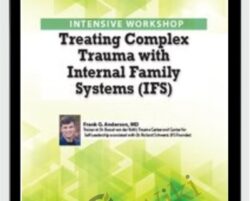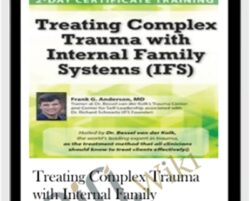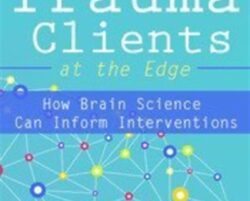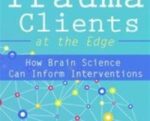We often get shaken and lose confidence in our approach when a client’s trauma response edges into seemingly uncontrollable dynamics of rage, panic, or suicidal desperation.Watch Frank Anderson, colleague of Dr. Bessel van der Kolk and Dr. Richard Schwartz, as he provides an essential road map for treating relational trauma cases. Explore the neurobiological processes of hyperarousal and parasympathetic withdrawal and the underlying symptoms.Watch now and you will also learn various therapeutic techniques and interventions that can be integrated with psychotherapy practices to help soothe your clients’ traumaEvaluate the extreme symptoms of trauma by determining if they are rooted in sympathetic activation or parasympathetic withdrawal to inform clinical treatment interventions.Articulate methods by which neuroscience can be interfaced with psychotherapy practices to improve clinical outcomes. Experiential Treatments – Integrating neuroscience and psychotherapyNecessity of utilizing physical, emotional and relationship aspects in therapeutic interventionProblems with traditional phase oriented treatmentNegative evaluation of symptoms – ignoring their protective functionInternal Family SystemsUnderstanding symptom presentation as positive efforts pushed to extremesWelcoming and integrating all parts of an individualIdentifying intent of symptomology, importance of avoiding shamingRedefining trauma related diagnoses and integrating overactive protective mechanismsDisorganized attachmentBorderline Personality Disorder, Dissociative Identity DisorderTherapist factors – vulnerabilitiesImpact of therapist parts acting as separately as the clients we work withResponding effectively to personal triggersSymptoms of post traumaHyperarousal, hyperarousal, psychic woundsImportance of obtaining permission before addressing psychic woundsExperiential exercise – self-awareness, response to triggersMind-brain relationshipsNeuroplasticity, neural integrationNeural networks associated with traumaImplicit nature of trauma memoriesAutonomic nervous systemRole of cortisolSympathetic hyper-arousalCharacteristics of extreme symptom activation and mixed statesTherapeutic responsesChoosing compassion or empathic responsesProviding auxiliary cognitionStrategies to avoid contributing to hyperarousalTop down strategies to separate or unblendCase presentation – example of permission seeking, direct access and unblendingPolyvagal TheoryDorsal and ventral branchesActivating strategies, responding to hypo-arousal, bluntingGet Treating Complex Trauma Clients at the Edge: How Brain Science Can Inform Interventions of author Frank Anderson only price 29$Tag: Treating Complex Trauma Clients at the Edge: How Brain Science Can Inform Interventions – Frank Anderson Review. Treating Complex Trauma Clients at the Edge: How Brain Science Can Inform Interventions – Frank Anderson download. Treating Complex Trauma Clients at the Edge: How Brain Science Can Inform Interventions – Frank Anderson discount.
 2-Day Intensive Workshop: Treating Complex Trauma with Internal Family Systems (IFS) – Frank Anderson
₹28,386.00
2-Day Intensive Workshop: Treating Complex Trauma with Internal Family Systems (IFS) – Frank Anderson
₹28,386.00
 Treating Complex Trauma with Internal Family Systems (IFS) – Frank Anderson
₹6,806.00
Treating Complex Trauma with Internal Family Systems (IFS) – Frank Anderson
₹6,806.00
Treating Complex Trauma Clients at the Edge: How Brain Science Can Inform Interventions – Frank Anderson
₹4,150.00





